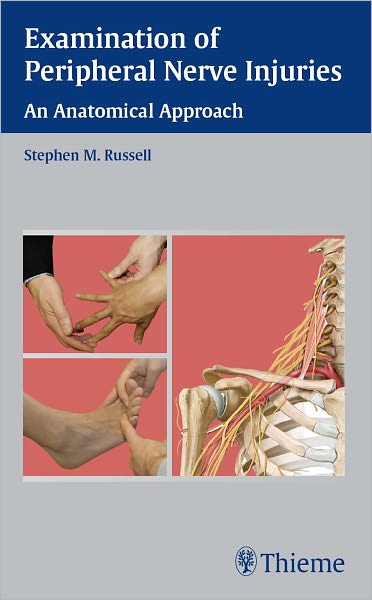Examination of Peripheral Nerve Injuries: An Anatomical Approach ebook download
Par mazzella darin le vendredi, septembre 25 2015, 23:51 - Lien permanent
Examination of Peripheral Nerve Injuries: An Anatomical Approach. Stephen Russell
Examination.of.Peripheral.Nerve.Injuries.An.Anatomical.Approach.pdf
ISBN: 9781604065282 | 192 pages | 5 Mb

Examination of Peripheral Nerve Injuries: An Anatomical Approach Stephen Russell
Publisher: Thieme
Due to From an anatomic point of view, the glossopharyngeal and vagal nerves act closely together. Aug 17, 2012 - Most pain is a result of traumatic injury or bacterial infection in pulpal and periapical tissues, and dental practitioners are successful at diagnosing these conditions and providing prompt relief. PCA will be set at 0.1 mg per bolus every 5 minutes as needed (to a maximum of 10 mg per 4 hours), which will be initiated in the recovery room. Periodic endoscopic examination of the left guttural pouch showed that local thickening and distal atrophy of this pharyngeal ramus did not improve, neither did the clinical symptoms. Nov 2, 2011 - In humans with peripheral nerve injuries, shorter wait times to decompression surgery led to improved functional recovery, and, while a return of sensation occurred in all patients, motor recovery was limited. Dec 10, 2013 - A promising approach to provide postoperative pain control of the abdominal incision is the newly developed transversus abdominis plane peripheral nerve block. This can increase membrane excitability and decrease the activation threshold of peripheral nociceptors (a process referred to as peripheral sensitization) increasing nociceptive input into the central nervous system (CNS). Neurofilament (NF-200; red) and bungarotoxin (BTX; green) immunostaining shows little NMJ reinnervation in ipsilateral plantar muscles of LM controls 55 days after injury, even though axons are in nerve branches and approach the end plate. Feb 22, 2012 - Five possible indications for lumbar disk surgery: (1) progressive motor weakness from nerve root injury, (2) progressive motor impairment by EMG, (3) abnormal bowel or bladder function, (4) incapacitating nerve root pain despite conservative treatment, and (5) recurrent incapacitating Lumbar spinal epidural abscess presents as back pain and fever; exam may be normal or show radicular findings or cauda equina syndrome; abscess extent best defined by MRI. Jul 18, 2013 - Furthermore, their potential for regeneration of peripheral nerves and spinal cord injuries was demonstrated previously [22]. With the use of anatomical landmark-based techniques, novel types of nerve blocks have been designed to deliver effective and directed analgesia. Radial and ulnar arterial injuries make up 5-30% of all peripheral vascular injuries [2]. A focused history and thorough physical examination, combined with a working knowledge of normal vascular anatomy, can help identify most vascular abnormalities of the upper extremity. Dec 24, 2009 - Palsies involving the anterior interosseous nerve (AIN) comprise less than 1% of all upper extremity nerve palsies. The most common cause of upper extremity vascular which it supplies [14]. Jul 11, 2013 - Daily guttural pouch irrigations with a clotrimazole emulsion (20 g Canesten® Gyn4 solved in 500 ml water), led to a good recovery of the mucosa above the nerve.
